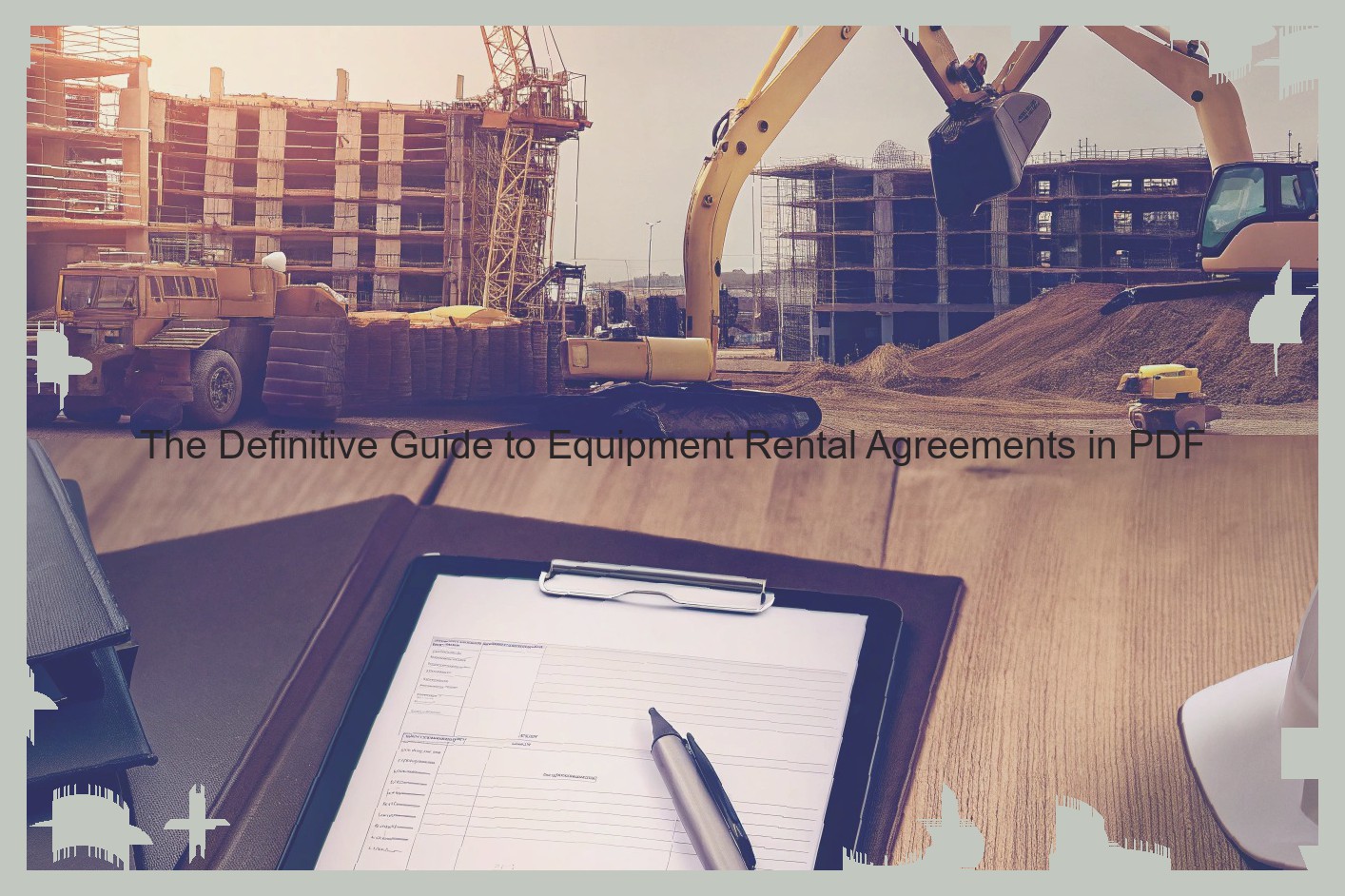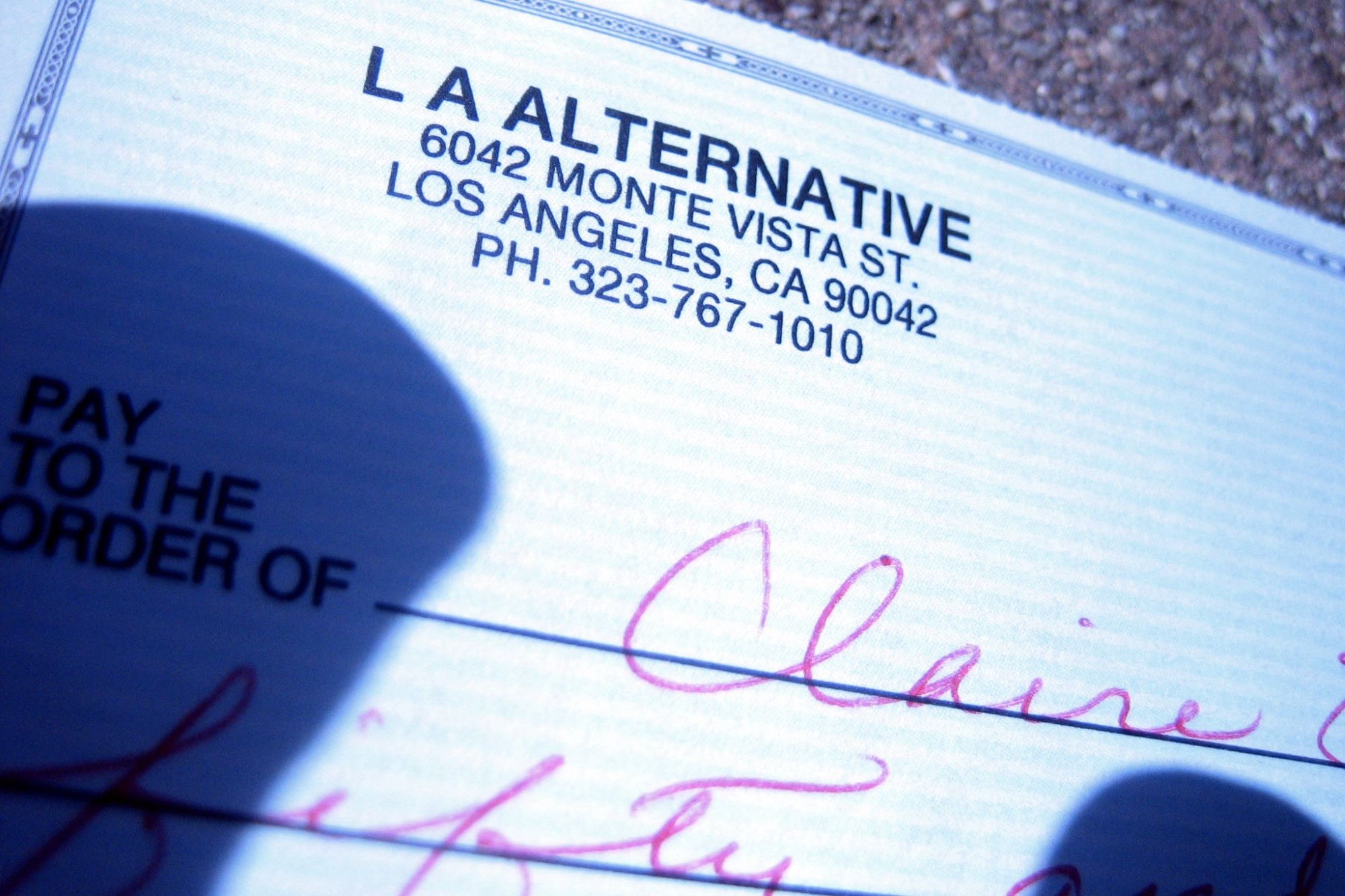Equipment Rental Agreements Explained
Equipment rental agreements are common business transactions in many industries, including the construction sector. A rental agreement is a document that describes an arrangement where a company or individual hires equipment from a rental provider, rather than purchasing the equipment outright.
Because renting or leasing is such a key part of the construction industry, it’s important to understand how a rental agreement works in practice and what sort of ramifications can emerge if it is not reviewed thoroughly.
A rental agreement in most cases will lay out the terms of the rental, including the length of time and how much rent is going to be paid. It’s important to note that the rental payments are likely to include interest, and are structured much the same way as an interest-bearing loan. This is sometimes a key point that convinces businesses to lease rather than buy equipment: they can afford the lease payments, but don’t have the money to purchase the equipment .
A variety of other specific details will be laid out in the rental agreement, such as applicable taxes, security deposits, insurance coverage and all parties involved in the agreement. It’s normally the case that the rental company will have some form of liability coverage on the equipment, but the lessee or renter may be expected to pay for any damages that occur while the equipment is being rented.
One associated benefit of rental agreements is that most limit the legal liability of both parties. There are serious penalties assessed on either party if the equipment is returned in less than reliable condition at the end of the term of the lease.
Rental agreements are commonly used in situations where a lessee has a temporary need for equipment, such as on a per-project basis as it’s often the case with construction-related equipment.

Essential Features of an Equipment Rental Agreement PDF
An Equipment Rental Agreement PDF must identify the parties and the equipment subject to the Agreement. The term of the Agreement, as well as the rental price, must be stated in writing. A general description of the equipment is helpful. The condition of the equipment upon delivery to the lessee should be documented both in writing and with photographs. The parties should identify who will be responsible for maintenance and repairs. The timing of maintenance and repair obligations must be included so that both parties are clear on when such maintenance and repairs are due.
If the equipment is being leased for construction work on a public works project, the construction contract and the bond under the contract should be reviewed to determine whether there is any obligation to provide notice to the surety. The lease should also make clear that it is subject to the contract and shall include the indemnification and insurance obligations under the contract.
How to Create a Solid Equipment Rental Agreement
A thorough equipment rental agreement typically includes the following clauses: Each of these components serves a specific purpose in ensuring that the agreement is legally binding while protecting the interests of both parties. For instance, the clause addressing expedited resolution specifies how the parties will handle any disputes that may arise, suggesting mediation or arbitration, for example. It can be important to remain open to a negotiated resolution of these types of disputes, and specifying this in the contract can help to facilitate this process. The rental clause always includes the name and address of the rental company, the type of equipment that it carries, as well as any additional clauses that are specific to its line of equipment. From a legal perspective, it is important to have a comprehensive agreement of this nature that addresses exactly what kinds of equipment are covered and any limitations of the contract. The rental period clause of the contract can vary considerably from one agreement to another. A furniture rental company may only need to rent out its equipment for a few days, while other companies could require rentals for months or longer. The contract needs to be specific as to exactly how long the equipment can be rented out before it must be returned. The rates and fees clause is just as specific, detailing what the rental charges will be for the different classes of equipment that are available, including specific rates for heavy vs. light equipment, or short-term vs. long-term rentals. The inequality clause is used by the rental company to waive its right to unequal performance of the contract, meaning that it cannot be held liable if one of the two parties to the contract breaches it first. The renewal clause states that the original contract is automatically renewed unless it is canceled, while the waiver clause holds that if either party waives any of its rights contained in the contract, it does not mean that those rights are waived under other circumstances. The limitation of liability clause limits one or both of the companies from being held liable for certain circumstances that are out of their control. This is often referred to as "force majeure." The indemnity clause offers protection for the rental company in the event that someone with injuries or damages seeks restitution from it for equipment that it sold or rented out. The governing law clause sets forth that the state law where the breach of contract action is filed more than likely will govern it. Finally, the severability clause stipulates that if one provision of the contract is found to be unenforceable, the rest of the contract will still be binding and enforceable. When choosing an equipment rental company, always make sure that it has the specific equipment that you require, offers it for a reasonable rate, have insurance in place in the event of damages to the equipment and have a written contract in place with the company.
Advantages of Having a PDF for Equipment Rental Agreements
Choosing the right format when it comes to equipment rental agreements is an important factor that can make life a lot easier for everyone involved. The goal is to find a balance that gets the job done while also making things easier for the people who use the forms. From the perspective of anybody who rents out equipment, it probably seems quite pleasing to have the equipment rental agreements in a reliable format that can be used over and over again for as many different transactions as required. This is where employing a portable document format can be of help.
Portable Document Format files (PDFs) are the go-to document type for forms of all kinds because they are incredibly simple to produce and share while also being as secure as one would want. Many different word processors and spreadsheet programs support a PDF output natively so that the user can save their work immediately to this common and reliable form. Once it is saved in PDF format, the user can immediately move on to sending the document electronically by email or placing it in storage, instead of having to wait for formatting to finish or concerns over the final document being different from what was expected.
The primary benefit of choosing a PDF for any type of document that needs to be utilized multiple times is consistency. A PDF file generated from a word processor or other application should look exactly the same as every other file created in the same way, which is not the case with a native file type. A Microsoft Word document may display differently depending on the version of the program in question as well as any installed templates and other settings or features, so the results can be unpredictable. This means that users of different versions of a program may be confused or even unable to read another user’s share documents if their document is not formatted correctly. PDF files, on the other hand, will appear exactly the same to all users, so the risk of miscommunication and suddenly not being able to see part of a document is a nonissue.
For electronic security, a PDF file offers a large number of options for the user so that whatever level of protection is desired can be applied. Access controls can be used to limit who can view the file and whether it can be printed or shared. The document can be signed digitally so that the user can verify later on that it has not been tampered with or altered after it was executed. Any other kind of security is simply unavailable for a native document. Users of a word processing or spreadsheet application do not have any options for applying controls or measures to the files that they send out. Those who are looking for a truly secure solution will find that formatted and well-secured PDFs are the way to go.
Common Pitfalls in Equipment Rental Agreements
When entering into any kind of rental or lease agreement, there are several common mistakes that businesses are at risk of making. These mistakes can usually be avoided with appropriate attention to detail and research. With an equipment rental agreement this means ensuring that the terms of the contract are fair to both the user and the owner of the item and that they won’t subsequently expose the owner to unnecessary risks. There are a number of different issues to watch out for when creating and signing an equipment rental agreement, including:
• Leaving blank spaces: Much like any other legal document, it is important that an agreement of this type be properly filled out, so all blank spaces on the document should be completed prior to signing. Leaving them blank can put you at a disadvantage once the document is signed and can create room for confusion and misinterpretation of specific terms.
• Not reading the entire document: In addition to ensuring that it is completely filled out , you should read through the document in its entirety before signing, even if it is a standard form lease agreement for an item of equipment that is used often. Fully understanding the terms and conditions of the equipment rental agreement before it is signed could help you avoid costly disputes over specific terms of the agreement later on.
• Excessive fees: Some leases or rental agreements for equipment may include excessive penalty fees that end up being a greater cost than the rental itself. If you are unsure of the validity of a specific fee in a contract, find out whether the charges are reasonable based on state or federal law and the types of damages the contract seeks to protect the owner from.
• Making too many assumptions: The equipment rental agreement may have some terms that could be interpreted in multiple ways, which could lead to disputes. Make sure that you fully understand all aspects of the agreement, and do not be afraid to ask the rental company questions or have them clarify any points that may be unclear.
Sources for Reliable Equipment Rental Agreement Templates
The vast number of resources online can make locating a reliable equipment rental agreement somewhat difficult. However, several websites stand out for their quality and variety of available documents. Generally, the best sites for finding rental contracts have a mix of both free and paid options, with the majority of free downloads requiring a simple opt-in email subscription.
Legaltemplates.net is one of the best sites for finding customizable equipment rental contracts in PDF form. These agreements are fully editable by the user and are free to sign and share once they are finished. However, the site asks for an email address to send the download link, even though core features are all free of charge. It also requires a separate subscription for its VIP membership, which unlocks benefits like the ability to change text fonts, sizes and colors. For $38 per year, it’s an economical option for small business owners who need to sign or share multiple contracts.
Another great source for free contracts is Rocket Lawyer. The free account features limited use promises for 7 days, during which time you have access to unlimited contracts. You can also print free copies of any signed, paid contract through the mobile app. If you need to review an agreement before purchase or arrive at the site after the free trial period has expired, downloading a complete rental agreement costs from $39.99 to $49.99. In addition to contracts, Rocket Lawyer provides various other documents and a searchable knowledge library.
Finally, Find Legal Forms offers a comprehensive selection of rental agreements and separate tenancy forms, arranged by state. Available for $7.95 each, these downloadable and printable forms require a paid membership to the website. That membership gives you access to all of their document templates, but note that the duration is only good for one year. As a bonus, the website also offers a free license and registration form for downloads that require them.
All three of these sites include numerous form instructions and additional features to help you get the most out of your documents. With all of the options available online, you’re guaranteed to find a rental contract that fits your needs.
Equipment Rental Agreement FAQs
Are Equipment Rental Agreements Legally Binding?
Yes. These contracts are legally binding if both parties sign the documents, unless additional steps are required under state law and such steps are not taken prior to the contract being completed.
What Happens if the Contracts are Modified After Signing?
If a contract is modified after an agreement is signed, such as one party begins using new equipment or other terms change, this "modification" would be later proven true through witness testimony or other documents that show the party’s actions and other circumstances that align with the modification. Both parties should sign their names on the "modified" contract in order to show that they have agreed to the modifications .
When are Rental Agreements Terminated or Abandoned?
A rental agreement is terminated when:
If a damage deposit was required, the property owner must give the renter their damage deposit back within a reasonable period of time according to the law.
If the written agreement said the contract would be enforced until an end date or terminator event, such as selling the equipment, tenants should not be abandoned until they are notified about the end of the agreement.
A renter cannot back out of the contract without breaking the contract, therefore costing them money if the agreement is breached.
If the equipment is picked up without the agreement being ended, legal enforcement will be requested in court.



